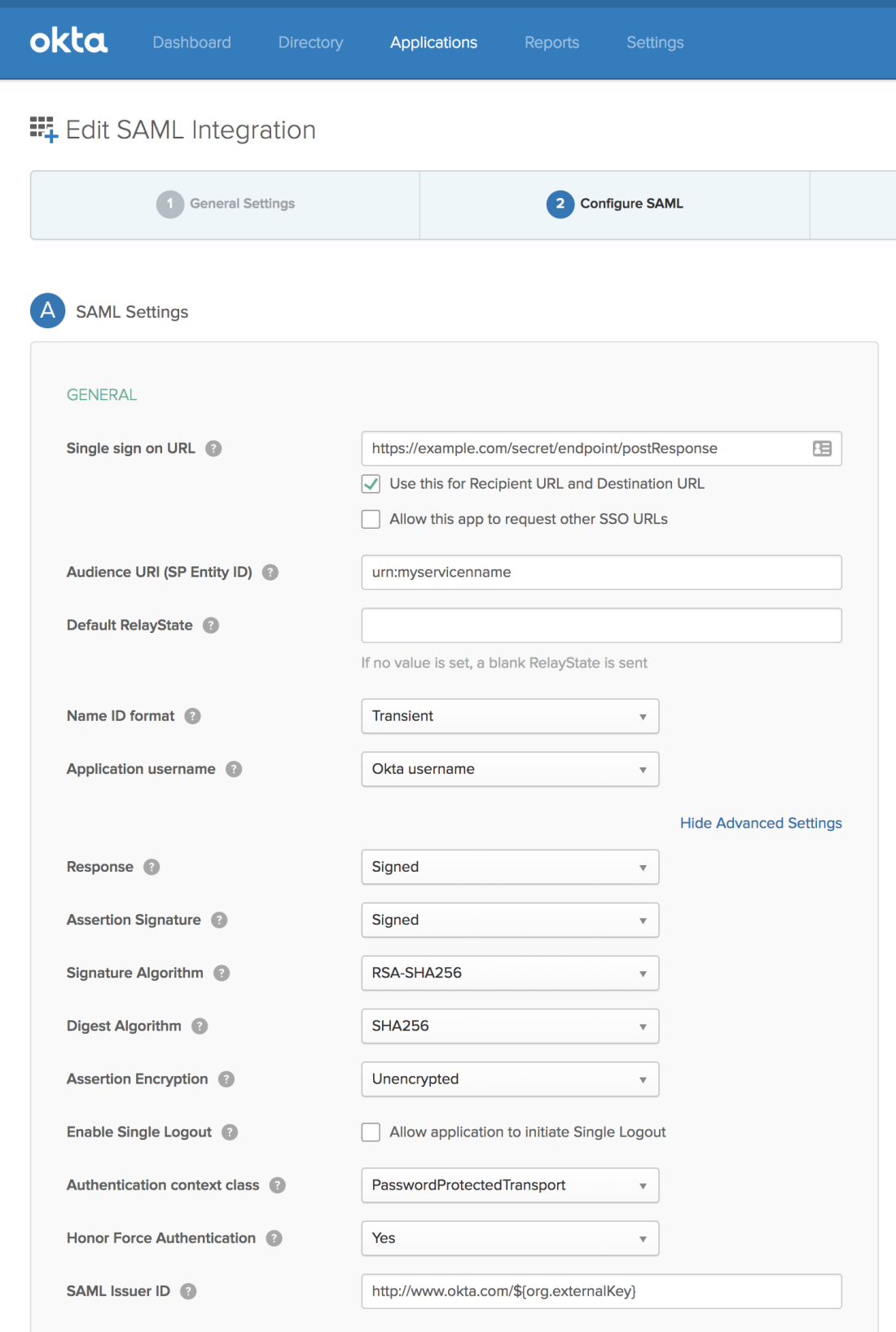Problem
My employer wholly embraces the coffee-shop model for employee access, which can induce a bit of stress if your job is to protect company resources. Historically, we have had to support some applications that:
- Don’t support SAML (or whatever flavor of federation you prefer)
- Probably wouldn’t be exposed outside of the firewall/VPN at most companies because they were never designed to be Internet-facing
We are an enterprise, but only had a small handful of these ‘naughty’ systems. It wasn’t super cost-effective to jump into a 1500+ employee seat contract with Duo (now Cisco), Cloudflare Access, or ScaleFT Zero Trust Web Access1 just to solve this particular problem across a small number of hosts. Yet, employees were frustrated that most day-to-day operations did not require jumping on a corporate VPN until you had to reach one of these magical systems.
Solution
I designed a SAML-aware reverse-proxy using a combination of Apache 2.4, mod_auth_mellon, and a sprinkling of ModSecurity to add some rate limiting capabilities. The following examples assume Ubuntu 16.04, but you can use whatever OS you’d like, assuming you know how to get the requisite packages.
Install dependencies and enable Apache modules
sudo apt-get install apache2, libapache2-mod-auth-mellon, libapache2-modsecurity sudo a2enmod proxy_http proxy ssl rewrite auth_mellon security2
Configure ModSecurity
Our ModSecurity install will do one thing and one thing only: rate limit (by IP) access attempts by non-authenticated users.
Create or overwrite /etc/modsecurity/modsecurity.conf and put the following content:
# A minimal ModSecurity configuration for rate limiting
# on a large number of HTTP 401 Unauthorized responses.
SecRuleEngine On
SecRequestBodyAccess On
SecRequestBodyLimit 13107200
SecRequestBodyNoFilesLimit 131072
SecRequestBodyInMemoryLimit 131072
SecRequestBodyLimitAction ProcessPartial
SecPcreMatchLimit 1000
SecPcreMatchLimitRecursion 1000
SecResponseBodyMimeType text/plain text/html text/xml
SecResponseBodyLimit 524288
SecResponseBodyLimitAction ProcessPartial
SecTmpDir /tmp/
SecDataDir /tmp/
SecAuditEngine RelevantOnly
SecAuditLogRelevantStatus "^(?:5|4(?!04))"
SecAuditLogParts ABIJDEFHZ
SecAuditLogType Serial
SecAuditLog /var/log/apache2/modsec_audit.log
SecArgumentSeparator &
SecCookieFormat 0
SecUnicodeMapFile unicode.mapping 20127
SecStatusEngine On
# ====================================
# Rate limiting rules below
# ====================================
# RULE: Rate-Limit on HTTP 401 response codes
# Set IP address value to a variable
SecAction "phase:1,initcol:ip=%{REMOTE_ADDR},id:'1006'"
# On HTTP status 401, increment a counter (block_script), and expire that value out of cache after 300s
SecRule RESPONSE_STATUS "@streq 401" "phase:3,pass,setvar:ip.block_script=+1,expirevar:ip.block_script=300,id:'1007'"
# On counter variable (block_script) being greater than or equal to '20', deny with HTTP 429 Too Many Requests
SecRule ip:block_script "@ge 20" "phase:3,deny,severity:ERROR,status:429,id:'1008'"
Feel free to add your own ModSecurity rules if you’d like to do things like detecting/blocking remote shell attempts, SQL injection, etc, but that’s not something I intend to cover here.
Modify the site (vhost) configuration
In case it’s non-obvious, in the following commands feel free to change out ‘myservicename’ with an appropriate identifier for service you are protecting with this gateway setup.
Head over to /etc/apache2/sites-enabled and open the vhost config file you intend to add protection to (or modify the default one, if this is a new install).
<IfModule mod_ssl.c> <VirtualHost _default_:443> ServerAdmin webmaster@localhost [...] # MSIE 7 and newer should be able to use keepalive BrowserMatch "MSIE [17-9]" ssl-unclean-shutdown ProxyRequests Off ProxyPass /secret/ ! # If fronting a locally-installed app, just forward to # the correct listening port. Alternatively, # you can address a system on another domain and port. ProxyPass / https://127.0.0.1:8000/ retry=10 ProxyPassReverse / https://127.0.0.1:8000/ ErrorDocument 401 "\ <html>\ <title>Access Restricted</title>\ <body>\ <h1>Access is restricted to organizational users.</h1>\ <p>\ <a href=\"/secret/endpoint/login?ReturnTo=/\"><strong>Click here to login via single sign-on, or wait for 2 seconds to be redirected automatically.<strong></a><br /><br /><br /><br /><a href=\"/#noredirect\">Temporarily disable redirection.</a>if(window.location.hash == \"\") { window.setTimeout(function(){ window.location.href = \"/secret/endpoint/login?ReturnTo=\" + encodeURIComponent(window.location.pathname + window.location.search); }, 2000); }\ </p>\ </body>\ </html>" <Location /> # Documentation on what these flags do can be found in the docs: # https://github.com/Uninett/mod_auth_mellon/blob/master/README.md MellonEnable "info" AuthType "Mellon" MellonVariable "cookie" MellonSamlResponseDump On MellonSPPrivateKeyFile /etc/apache2/mellon/urn_myservicename.key MellonSPCertFile /etc/apache2/mellon/urn_myservicename.cert MellonSPMetadataFile /etc/apache2/mellon/urn_myservicename.xml MellonIdpMetadataFile /etc/apache2/mellon/idp.xml MellonEndpointPath /secret/endpoint MellonSecureCookie on # session cookie duration; 43200(secs) = 12 hours MellonSessionLength 43200 MellonUser "NAME_ID" MellonDefaultLoginPath / MellonSamlResponseDump On # This 'requirement' is actually going to be # optional. We also give some trusted IPs below, # and tell Apache we can fulfill either requirement. Require valid-user Order allow,deny # This is where you can whitelist IPs or # even entire network ranges, perfect for # systems that still need to accept # some API traffic from known networks. Allow from 10.20.30.0/24 Allow from 10.10.110.66 # Allow one of the above to be good enough. # You could change this to 'all' if you need # to satisfy SSO required AND valid network # required. Satisfy any </Location> <Location /secret/endpoint/> AuthType "Mellon" MellonEnable "off" Order Deny,Allow Allow from all Satisfy Any </Location> </VirtualHost> </IfModule>
Create SAML SP metadata files
We’ll download and use a shell script from the mod_auth_mellon authors to create the necessary SP metadata files:
sudo mkdir -p /etc/apache2/mellon/ cd /etc/apache2/mellon/ wget https://raw.githubusercontent.com/Uninett/mod_auth_mellon/master/mellon_create_metadata.sh bash mellon_create_metadata.sh urn:myservicename https://<YOURDOMAIN>/secret/endpoint
Now your directory structure should resemble the following:
msulliv@c0995a102f21:/etc/apache2/mellon/# ls mellon_create_metadata.sh urn_myservicename.cert urn_myservicename.key urn_myservicename.xml
mellon_create_metadata.sh is no longer needed and can be deleted, if you so choose.
Create the SAML 2.0 application profile on your IdP
Go to your identity provider and provision the new application. For this example, I’m using Okta (who I highly recommend):

Place SAML IdP metadata
Finally, grab the IdP metadata and put it on your clipboard:

Drop its contents into a new file at /etc/apache2/mellon/idp.xml:
msulliv@c0995a102f21:/etc/apache2/mellon# cat idp.xml <?xml version="1.0" encoding="UTF-8"?> <md:EntityDescriptor xmlns:md="urn:oasis:names:tc:SAML:2.0:metadata" entityID="http://www.okta.com/exkd2n9ujpQFaUq8f0h7"> <md:IDPSSODescriptor WantAuthnRequestsSigned="false" protocolSupportEnumeration="urn:oasis:names:tc:SAML:2.0:protocol"> <md:KeyDescriptor use="signing"> <ds:KeyInfo xmlns:ds="http://www.w3.org/2000/09/xmldsig#"> <ds:X509Data> <ds:X509Certificate>MIIDBzCCAe+gAwIBAgIJAJAD/4DMpp7vMA0GCSqGSIb3DQEB [...]
Restart Apache and Test
sudo systemctl reload apache2
Now head to your application and check out the results:

Redirected to an auth challenge – perfect!
Extending it further
Quickly adding SAML support to PHP/Python/Rails/Node/etc apps on the same host
In your organization’s homegrown applications where an existing Apache 2 server is acting as a front-end, this same principle can be used to quickly add SAML support. In your vhost config in the Mellon options, add:
<Location /> [...] RequestHeader set Mellon-NameID %{MELLON_NAME_ID}e
In your application, simply check for a value in this header and use it if present. For instance, in Python’s Flask framework:
@login_manager.request_loader def load_user_from_request(request): nameid = request.headers.get('Mellon-NameID') if nameid: user = User.query.filter_by(username=nameid).first() if user: return user else: # Provision user's account for first use user = User(nameid) return user # return None if method did not login the user return None
Back-end on another host
Some applications, like Splunk, can receive login user information via request header (note: Splunk now supports SAML natively, but it still makes for a good example app). We can direct mod_auth_mellon to send this header along with the information about an authenticated user. Mellon populates the field ‘MELLON_NAME_ID’ with the IdP username ([email protected]) after successful authentication.
In your vhost config in the Mellon options, add:
<Location /> [...] # Pass Splunk a request header declaring the user who has logged in # via SAML. The regex test at the end of this line ensures that # MELLON_NAME_ID is not an empty string before attempting to set # the SplunkWebUser header to the value of MELLON_NAME_ID. # Splunk unfortunately freaks out if the SplunkWebUser header is # declared but it has no value. RequestHeader set SplunkWebUser %{MELLON_NAME_ID}e "expr=-n %{env:MELLON_NAME_ID}"
Be careful to make sure your back-end application is only accessible via this reverse-proxy though, otherwise someone with local network access could simply send the back-end server requests directly with this header to bypass authentication entirely2. In Splunk’s case, that’s what the values under ‘trustedIP’ in $SPLUNK_HOME/etc/system/local/web.conf are for.
Footnotes
1. ScaleFT’s overall offering appears to be very enticing, and I see their recent acquisition by Okta as a great development. Because it addresses several other pain points, we are actively working to deploy ScaleFT at my organization, which will likely replace the home-grown solution described in this post.
2. Do your part to prevent data breaches by seeking assistance from someone with relevant security experience if you are unsure whether or not your back-end application on another host is properly protected from such an attack.
